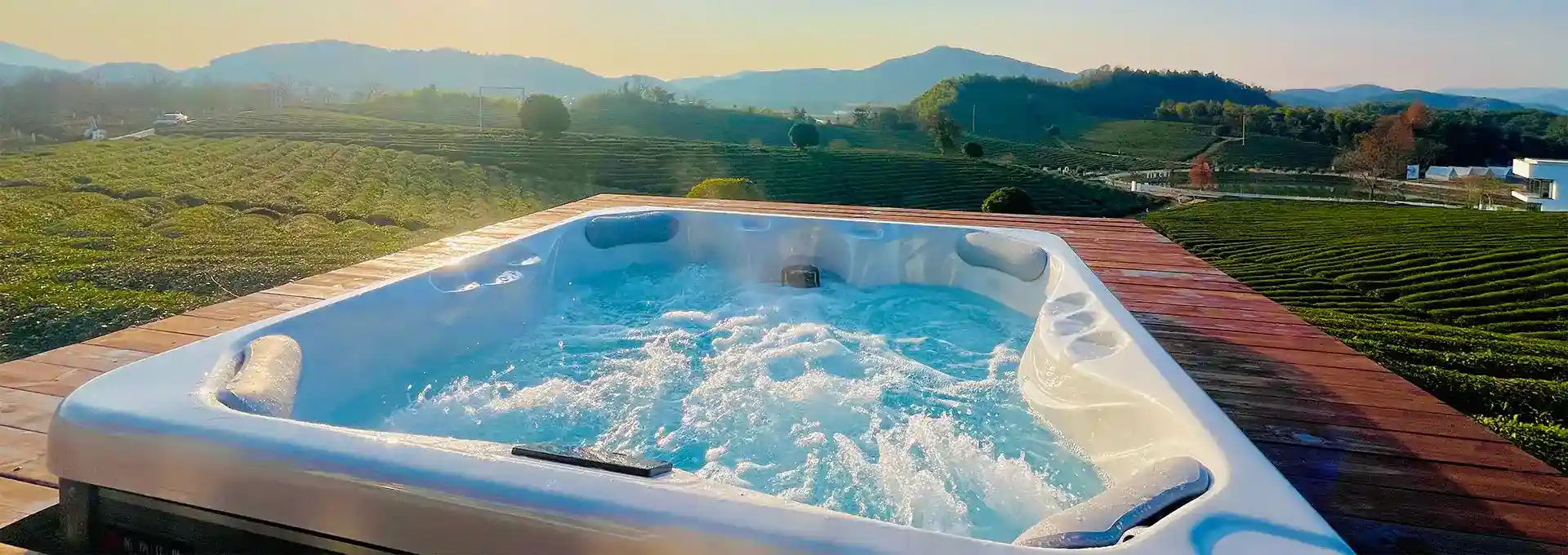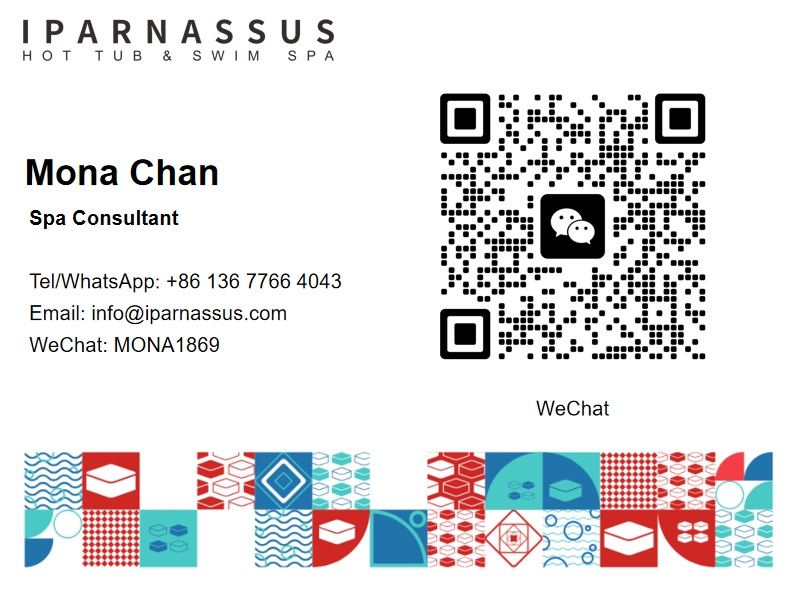How Do You Power a Hot Tub?
2024-08-27 16:54:48
Powering a hot tub is an essential consideration for anyone looking to enjoy the luxurious comfort of warm, bubbling water in their backyard. The method you choose to power your hot tub can significantly impact its performance, energy efficiency, and overall operating costs. This article will explore the various options available for powering a 6 seater hot tub, focusing on the most common and efficient methods used today.
What size electrical service do I need for a 6 seater hot tub?
When considering the electrical requirements for a 6 seater hot tub, it's crucial to understand that these units typically demand a substantial amount of power. Most 6 seater hot tubs require a dedicated 220-240 volt electrical circuit, which is more powerful than the standard 110-120 volt household outlet.
The specific electrical service needed depends on the hot tub's total amperage draw, which can vary based on the model and features. Generally, a 6 seater hot tub will require a 50-60 amp circuit breaker. This higher amperage allows the hot tub to heat water more quickly and efficiently, while also powering multiple jets, pumps, and other features simultaneously.
It's important to note that the electrical setup for a hot tub should always be installed by a licensed electrician. They will ensure that the wiring is properly sized, the circuit breaker is correctly rated, and all connections are secure and up to code. The electrician will also install a disconnect box near the hot tub, which is a safety requirement in most jurisdictions.
When selecting a hot tub, pay close attention to the manufacturer's specifications regarding electrical requirements. Some models may offer different power options, such as convertible systems that can run on either 110 or 220 volts. However, for optimal performance and energy efficiency, a 220-240 volt setup is generally recommended for a 6 seater hot tub.
Additionally, consider the location of your electrical panel in relation to where you plan to install the hot tub. The further the distance, the more wiring will be needed, which can increase installation costs. It's also important to ensure that your home's main electrical service can handle the additional load of a hot tub. In some cases, an upgrade to the home's electrical system may be necessary.
Lastly, don't forget about ongoing energy consumption. While a 220-240 volt system may require a more extensive initial setup, it often results in more efficient operation and lower long-term energy costs compared to 110-120 volt systems, especially for larger hot tubs like a 6 seater.
How much does it cost to run a 6 person hot tub?
The cost of running a 6 person hot tub can vary significantly based on several factors, including energy prices in your area, the efficiency of your hot tub, how often you use it, and your climate. However, we can provide a general overview to help you estimate the potential costs.
On average, running a 6 person hot tub can cost anywhere from $50 to $100 per month in electricity. This estimate assumes regular use and maintaining a consistent water temperature. However, this figure can fluctuate based on various factors:
1. Energy Efficiency: Modern hot tubs are designed with energy efficiency in mind. Look for models with good insulation, efficient heaters, and energy-saving features like programmable settings and high-quality covers. These features can significantly reduce energy consumption and operating costs.
2. Usage Patterns: The more frequently you use your hot tub, the higher your energy costs will be. However, maintaining a consistent temperature can be more efficient than letting the water cool and reheating it for each use.
3. Climate: In colder climates, your hot tub will need to work harder to maintain its temperature, increasing energy consumption. Conversely, in warmer climates, the ambient temperature can help reduce heating costs.
4. Water Temperature: Higher water temperatures require more energy to maintain. Lowering the temperature by just a few degrees when the 6 seater hot tub is not in use can lead to noticeable savings.
5. Cover Quality: A well-fitted, insulated cover is crucial for minimizing heat loss when the hot tub is not in use. Investing in a high-quality cover can lead to significant energy savings over time.
6. Maintenance: Regular maintenance, including cleaning filters and balancing water chemistry, can help your hot tub run more efficiently, potentially reducing energy costs.
7. Time-of-Use Rates: If your electricity provider offers time-of-use rates, you may be able to save money by heating your hot tub during off-peak hours when electricity is less expensive.
In addition to electricity costs, you should also factor in other ongoing expenses:
- Water: You'll need to occasionally top up the water level and completely refill the tub every few months. This can add a small amount to your water bill.
- Chemicals: Maintaining proper water chemistry requires regular use of sanitizers, pH balancers, and other chemicals. This can cost around $20-$30 per month.
- Filters: Hot tub filters need to be replaced periodically, usually once or twice a year, costing about $50-$100 annually.
- Maintenance: Regular professional servicing can help prevent larger issues and extend the life of your hot tub. Budget for at least one professional service per year, which can cost $150-$300.
To minimize running costs, consider the following tips:
1. Invest in an energy-efficient model with good insulation and a high-quality cover.
2. Use a programmable thermostat to lower the temperature when the hot tub is not in use.
3. Maintain your hot tub regularly to ensure it's running at peak efficiency.
4. Consider using solar panels or a heat pump to offset electricity costs.
5. Take advantage of off-peak electricity rates if available in your area.
While the costs of running a 6 person hot tub can add up, many owners find that the relaxation, health benefits, and social enjoyment they provide outweigh the expenses. By choosing an efficient model and implementing smart usage habits, you can minimize operating costs while maximizing your enjoyment of your hot tub.
How long can you leave a hot tub running?
The question of how long you can leave a hot tub running is a common concern for both new and experienced hot tub owners. The short answer is that modern hot tubs are designed to run continuously, 24 hours a day, 7 days a week. However, this doesn't mean that all components of the hot tub are constantly operating at full capacity.
To understand why hot tubs are designed for continuous operation, it's important to consider the various systems at work:
1. Heating System: The heater maintains the water at your desired temperature. It cycles on and off as needed, rather than running constantly.
2. Circulation Pump: This pump runs continuously to filter the water and distribute chemicals evenly. It's typically a low-wattage component designed for efficient, constant operation.
3. Jets and Main Pump: These are only activated when you're using the hot tub and don't run continuously.
4. Control System: This manages all the hot tub's functions and runs constantly but uses minimal power.
There are several reasons why it's generally recommended to keep your 6 seater hot tub running continuously:
1. Energy Efficiency: Contrary to what you might expect, it's usually more energy-efficient to maintain a constant water temperature than to let it cool down and reheat it for each use. This is especially true in colder climates where the water can lose heat quickly.
2. Water Quality: Continuous circulation helps maintain water quality by ensuring constant filtration and even distribution of sanitizing chemicals.
3. Component Longevity: Frequent power cycling (turning the hot tub on and off) can stress electrical components and potentially shorten their lifespan.
4. Convenience: Having your hot tub ready to use at any time enhances your enjoyment and increases the likelihood that you'll use it regularly.
5. Freeze Protection: In colder climates, keeping the 6 seater hot tub running prevents water in the pipes from freezing and causing damage.
However, there are situations where you might want to turn off your hot tub:
1. Extended Absence: If you're going to be away for an extended period (several weeks or more), it might make sense to shut down the hot tub, especially if you live in a warm climate.
2. Maintenance: You'll need to power down the hot tub for certain maintenance tasks or when changing the water (which should be done every 3-4 months).
3. Repairs: If you need to perform repairs or are experiencing electrical issues, you'll need to turn off the hot tub.
When it comes to energy consumption and cost, running your hot tub continuously is often more economical than you might think. Modern hot tubs are designed with energy efficiency in mind, with features like:
1. High-Quality Insulation: This minimizes heat loss, reducing the work the heater needs to do.
2. Energy-Efficient Pumps: Circulation pumps are designed for continuous, low-power operation.
3. Smart Heating Systems: These only activate when necessary to maintain the set temperature.
4. Programmable Settings: Many hot tubs allow you to set different temperatures for different times of day, potentially reducing energy use during periods when you're less likely to use the tub.
To maximize energy efficiency while running your hot tub continuously:
1. Use a well-fitting, insulated cover when the hot tub is not in use to minimize heat loss.
2. Set the temperature a few degrees lower when you know you won't be using it for a while.
3. Regularly maintain your hot tub, including cleaning filters and balancing water chemistry, to ensure it's operating at peak efficiency.
4. Consider using an auxiliary heating method like a heat pump or solar panels to offset electricity costs.
In conclusion, modern 6 seater hot tubs are designed to run continuously, and doing so often provides the best balance of energy efficiency, water quality, component longevity, and convenience. However, it's important to understand your specific hot tub model, your usage patterns, and your local climate to make the best decision for your situation. Regular maintenance and smart energy-saving practices can help you enjoy your hot tub while minimizing operating costs.
For more information on hot tub installations and to find out more about our products, please feel free to contact us at info@iparnassus.com.
References:
1. Energy.gov. (2022). Energy-Efficient Home Design.
2. Hot Spring Spas. (2023). Hot Tub Electrical Requirements.
3. Swim University. (2024). Hot Tub Electricity Costs.
4. Jacuzzi. (2023). Hot Tub Energy Efficiency Guide.
5. Home Advisor. (2024). Cost to Install a Hot Tub.
6. Bullfrog Spas. (2023). How Much Does it Cost to Run a Hot Tub?
7. Master Spas. (2024). Hot Tub Maintenance Guide.
8. Caldera Spas. (2023). Hot Tub Winterizing Tips.
9. The Spruce. (2024). Hot Tub Installation Guide.
10. This Old House. (2023). Hot Tub Buying Guide.



